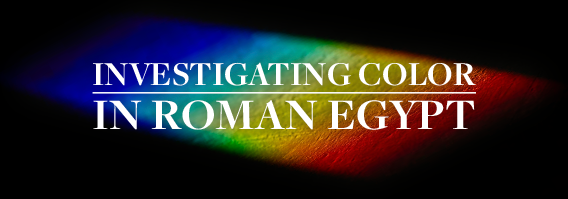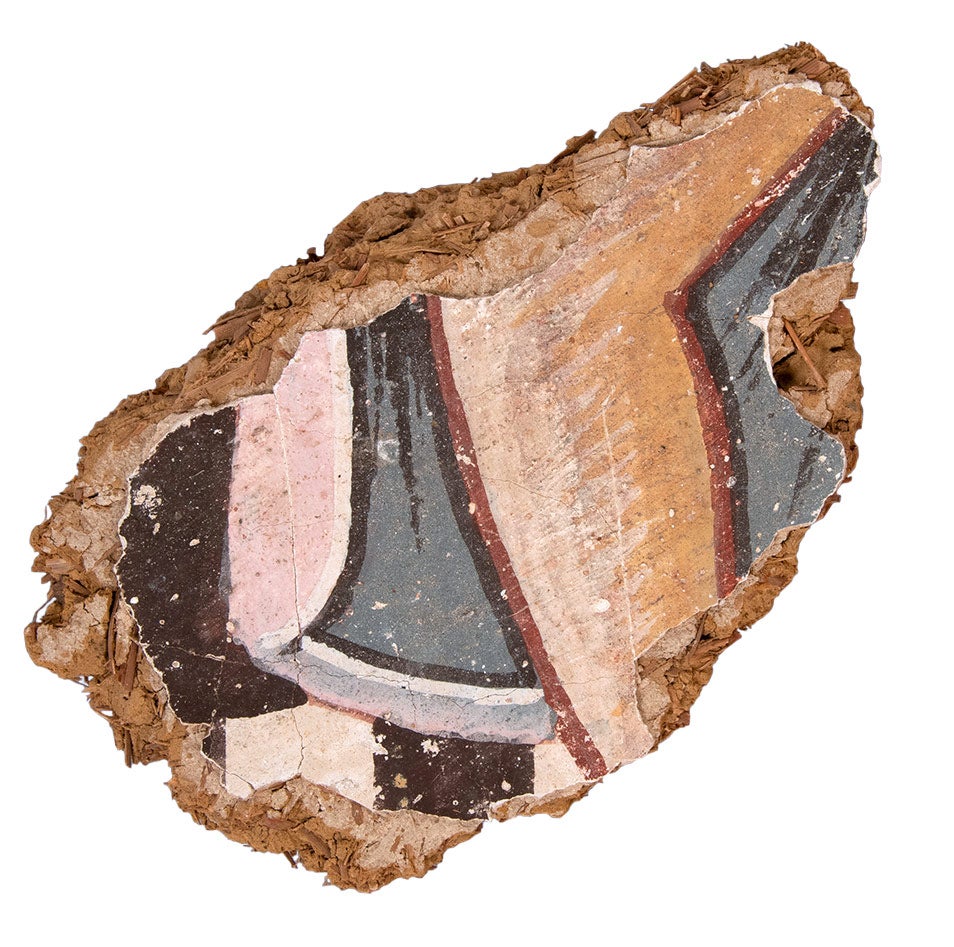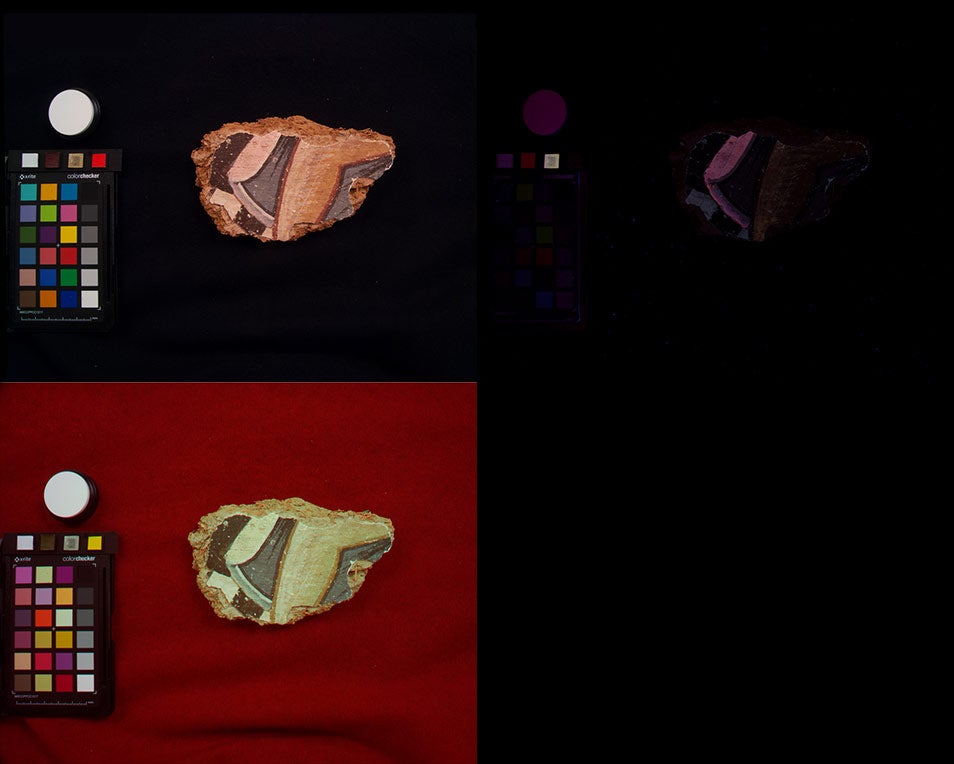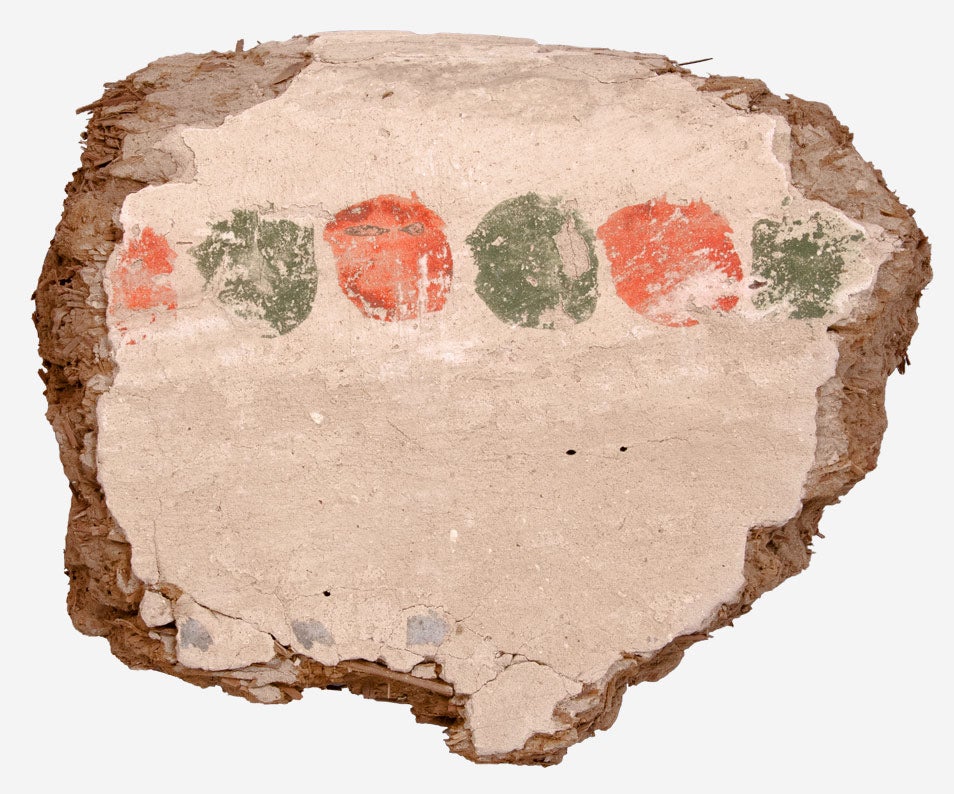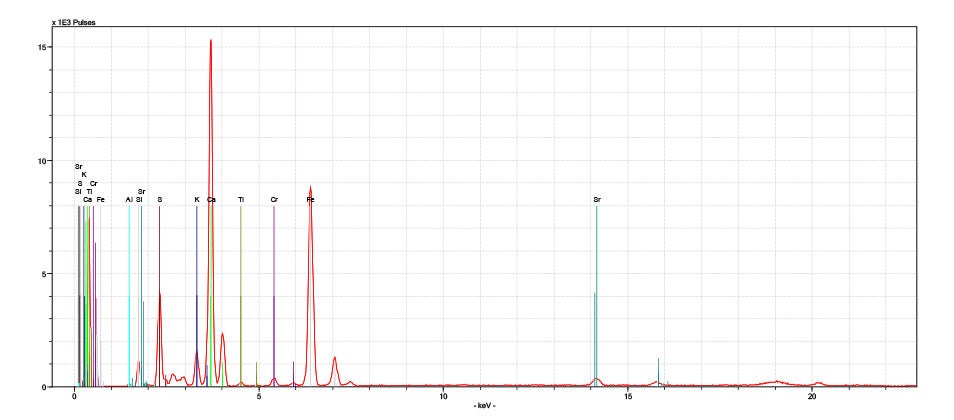Wall Painting Fragment (KM 26982)
This colorful wall painting fragment was discovered inside House 124E at Karanis, along with domestic tools including vessels, basketry, and fruit stones (pits from “stone” fruits). It’s possible that this painting adorned the interior wall of Room I; on the back of the fragment, you can still see the tempered mud substrate. The painting itself depicts an arm or a leg joint alongside a polychrome cape. It’s fun to imagine what kind of scene this fragment originated from and how it might have looked! Was it a battle? Some kind of ceremony?
The pigments we found on this fragment are typical of the Roman Egyptian pigment palette, with carbon black and lead white, red and yellow earth pigments, and madder lake. The rather muted blue, however, is unusual. It is not Egyptian blue or indigo. It is likely an optical blue—a white pigment (in this case gypsum) mixed with carbon black or a dark iron-based pigment. Other known examples of optical blue date to earlier periods (as early as the First Intermediate Period in Egypt), and its continued use in the Roman period is interesting.

Wall Painting Fragment (KM 26983)
This bit of wall painting—a string of alternative green and red dots over a white background—was also found in House 124E. It has a similar preparation of painted plaster over tempered mud and similar pigments—including a series of bluish-gray flecks along the bottom that could be another instance of optical blue. The green dots are most likely made of green earth pigment, an iron-based earth mineral that appears in numerous locations throughout the Mediterranean.
Green earth was the dominant green colorant in Roman Egypt, so finding it on this fragment was not a surprise. However, when we found an unexpected peak for chromium in XRF spectra taken from the green dots, things got interesting. At first, we questioned the authenticity of the green dots—and of the fragment itself—but as it turns out, green earth minerals such as celadonite and glauconite can contain elements like chromium in trace amounts. We learned that chromium has been detected in green earths in Roman wall paintings from Italy. Could this have implications for where in the ancient Mediterranean the green earth on our wall painting came from? This question has “future study” written all over it.
